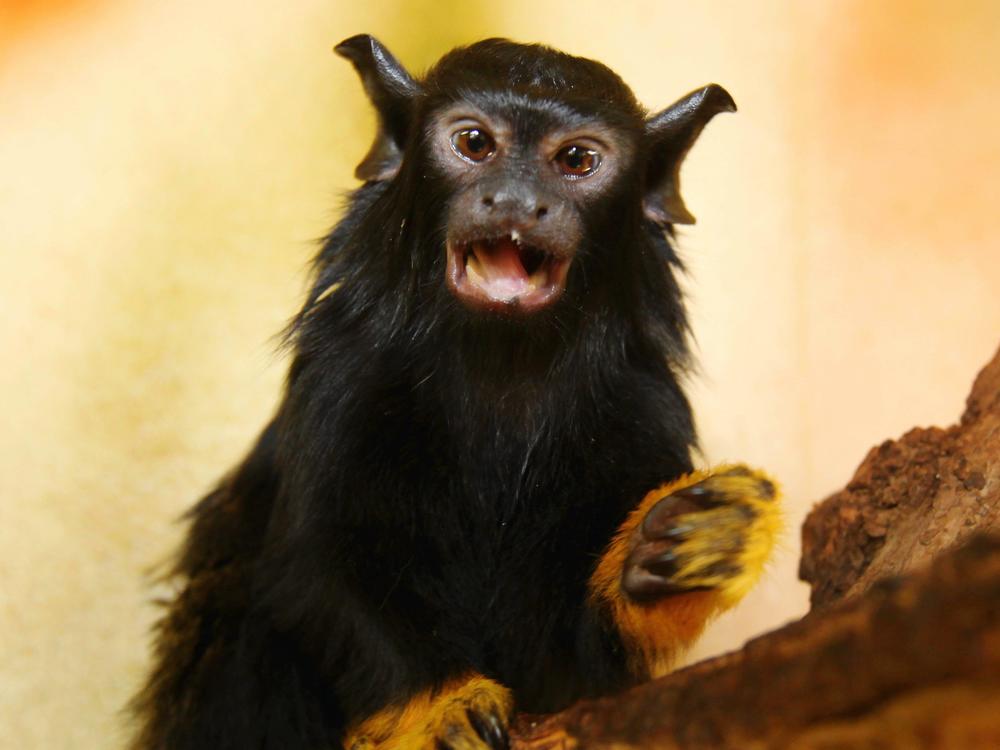Section Branding
Header Content
Scientists Say These Monkeys Use An 'Accent' To Communicate With Their Foe
Primary Content
In the Brazilian Amazon, a species of monkey called the pied tamarin is fighting for survival, threatened by habitat loss and urban development.
But the critically endangered primate faces another foe: the red-handed tamarin, a more resilient monkey that lives in the same region.
They compete for the same resources, and the red-handed tamarin's habitat range is expanding into that of the pied tamarins'. Their clashes sometimes end in violent altercations.
But in a recent study, scientists have discovered that the red-handed tamarin is altering its vocal calls to better communicate with the pied tamarin.
Tainara Sobroza, an ecology Ph.D. student who worked on the study, says these "territorial calls" are used to warn other species that they are encroaching on their territory, or coming too close to a crucial survival resource.
"When this happens, [the two species] usually engage in vocal battles," she says, which sometimes prevent the violent physical battles between the two species.
Researchers likened the change in calls to speaking with an accent.
"They might need to say 'tomahto' instead of 'tomayto' — that's the kind of nuance in the accent, so that they can really understand each other," Jacob Dunn, a professor of evolutionary biology who worked on the study, told The Guardian.
When analyzing the vocal call of both species, the scientists discovered that the red-handed tamarins new call has a narrower bandwidth and an increased amplitude, making the sound clearer and the duration of the call longer. The result is a call that travels better through the dense forest.
The hope is that this work will help conservationists to better design reserves and other survival mechanisms for the pied tamarins.
And because these two species are so rarely seen physically occupying the same space, listening is one way to do that work.
"We don't have to actually see," Sabroza says. "We can hear the ecological interaction."
Copyright 2021 NPR. To see more, visit https://www.npr.org.

